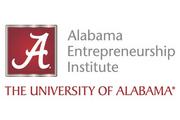
Staying energized is a critical goal for anyone who is trying to optimize their productivity and getting the most out of every day. As the amount and type of work we are all doing accelerates, I wanted review some energy basics.
Employee energy defined
We all know that energy is an important part of reaching goals. It’s especially important for business success, but what exactly is employee energy and how can you use it to maximize results at your organization?
Let’s start by defining the term, “energy.” According to Merriam Webster’s Dictionary, energy is the “ability to be active: the physical or mental strength that allows you to do things.”
In the world of physics, it also is defined as the ability to do work. There are two types of energy: (1) stored or potential energy and (2) kinetic or moving energy. As a manager or an individual owner of your own energy, you can play a role in converting potential energy to moving energy and directing that energy towards goals that help you meet overall objectives for yourself and for your organization.
From extensive research I have done on human energy at work, I introduced these definitions to help managers and individuals direct their human-energy more effectively:
Energy defined: Energy is the internal force available for you to exert at work (ability to work) = our version of potential energy.
Energy measured: Energy is measured by assessing the level of energy it takes for an employee to be at his or her best at work (how energy is used) = our version of kinetic energy.
With energy, being at your optimal energy level is the difference between success and failure. For example, if you want to lose weight, you may start a new exercise program. But if you don’t exert enough energy, you won’t burn enough calories to reach your weight-loss goals.
And if you exert too much energy, you may physically harm your body. That’s why it’s important to monitor your heart rate and try to stay in a particular, target zone when starting a new, exercise regime.
The same is true for exerting and monitoring employee energy. Humans can only multi-task, endure stressful situations, work long hours and continue to go "above and beyond" so long before they are at risk of being overwhelmed and even getting physically sick from the process.
Because of this, it’s essential to direct and optimize energy levels at work for optimal success.
Tips to direct and optimize employee energy
To help optimize employee energy-levels for the best results, managers and individuals can do two things:
- Create ideal conditions to convert potential energy to kinetic energy.
- Direct employee energy to focus on important and useful tasks.
Think about the role of the coach of a football team. You help your team succeed by hiring players with various skills, creating conditions under which they can perfect their talents and then directing these individuals to come together and make specific plays to score points. Over time, these can efforts add up for big wins.
What is the optimal, employee energy level?
The level at which an employee reaches his or her optimal energy level is specific to that individual. This means you cannot use the same methods of energy optimization for all employees. The research also shows the critical importance of energy being an optimization vs. a maximization metric. I use a 0 to 10 scale, and each person chooses the level at which they are at their own personal best (optimal energy) and the level where they are today (working energy).
Our research shows two things predict performance across multiple organizations around the world, studying different jobs and many different categories of people. Those two things are:
- Gap between working energy (where you are today) and optimal energy (where you are at your best). The bigger the gap, the bigger the productivity loss.
- Variance in energy over time – high variance is bad for performance.
It is essential for managers to develop specific goals for employees, or for individuals to do for themselves, and then direct energy towards these goals, monitoring the results along the way. This way, employees can work at a pace where they are in the right “zone" to be most productive.
And there is also a very important aspect of employee energy that managers often forget; energy is catchy. Manager’s energy affects their employees’ energy so it’s essential to monitor, direct and optimize your own energy levels as well.
Measure, reflect and then change energy habits
After doing work with large and small organizations around the world and collecting data from millions of individuals, we have learned that the key to success in optimizing human energy is measurement, reflection and action taking.
Measurement can be via technology, or it can be very simple. I worked with a company that used marbles and asked employees to put a red, green or yellow marble in a big glass bowl before they left work. Each color designated an energy level. The next day the plant manager would look at the bowl and talk about “why” then ask employees for ideas what to keep or change to keep them all in the green. Then they chose one best idea to implement.
This summer, think about helping your teams learn about energy, reflect on what is affecting energy and then work together to change habits to help individuals be more successful at work. I have helped manufacturing plants turn around and improve quality, call centers reduce turnover and organizations on the verge of bankruptcy recover when they optimize employee energy and direct that energy toward the types of efforts that drive positive change.
Energy + direction = higher performance.
To learn more about human energy at work, Theresa M. Welbourne, Ph.D., at twelbourne@cba.ua.edu.
